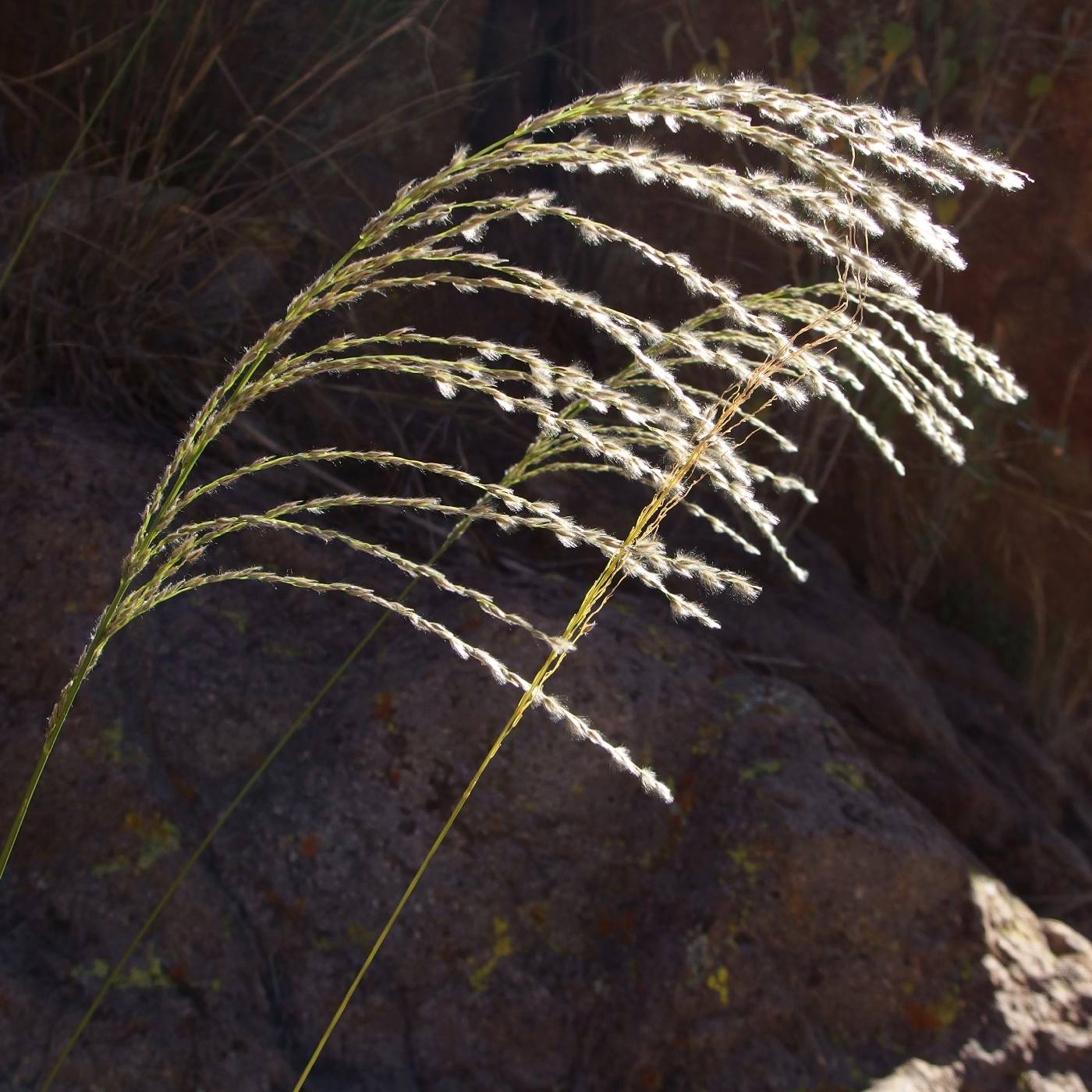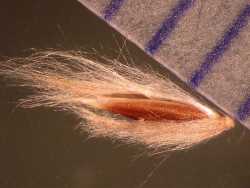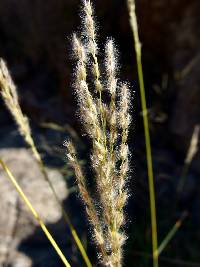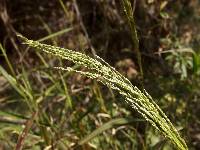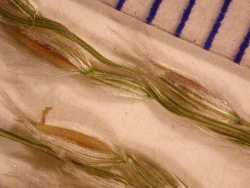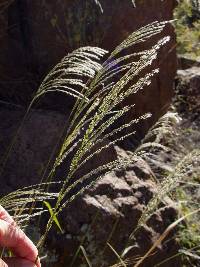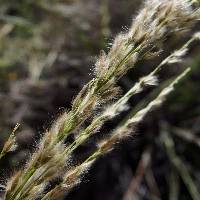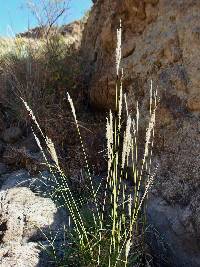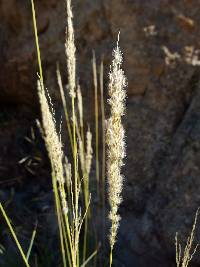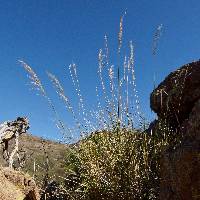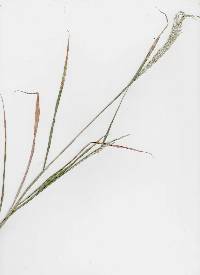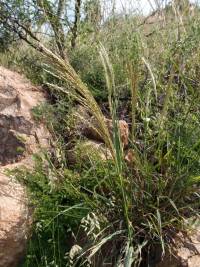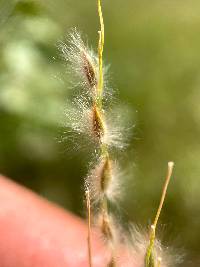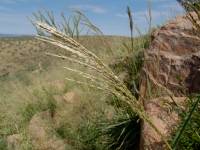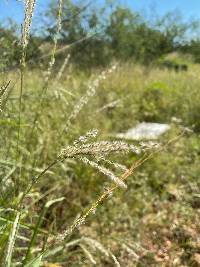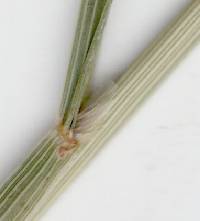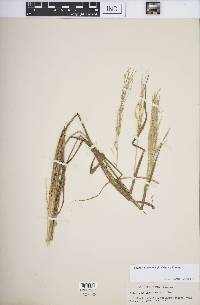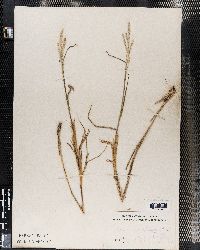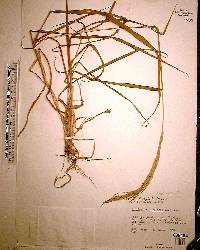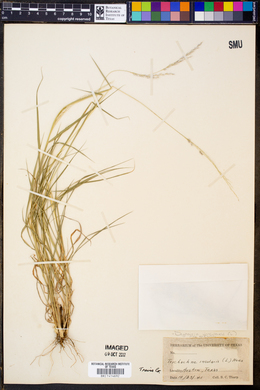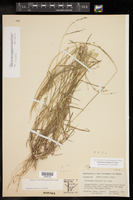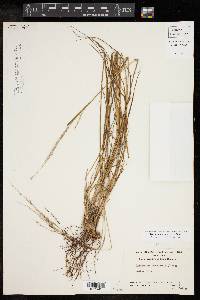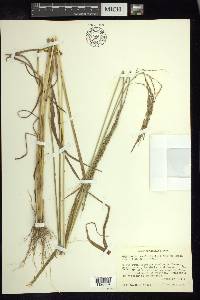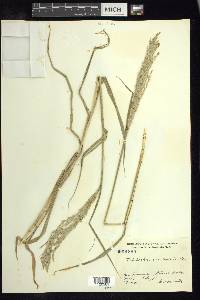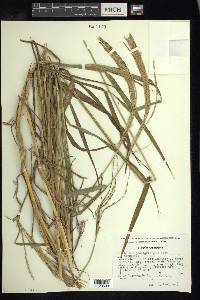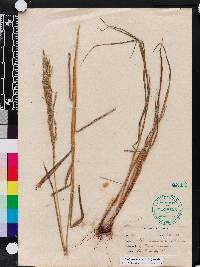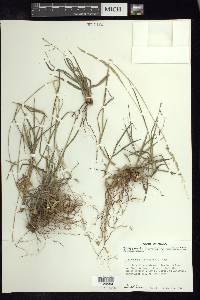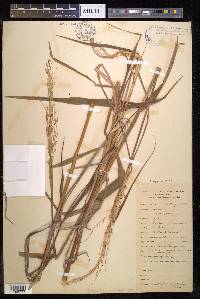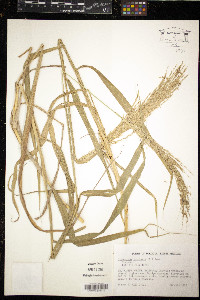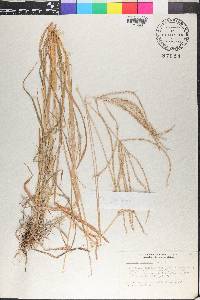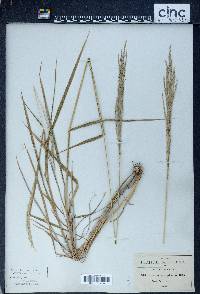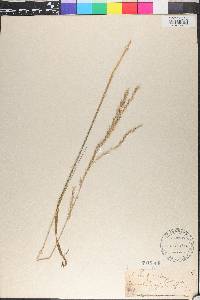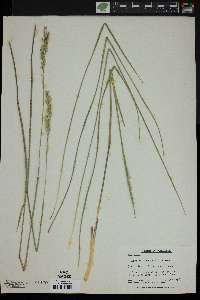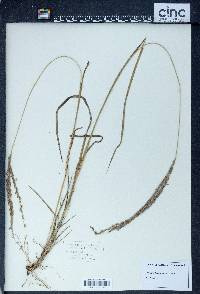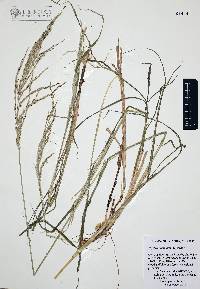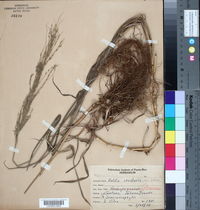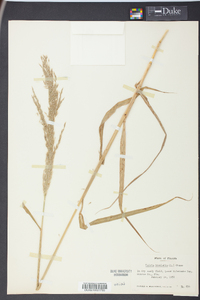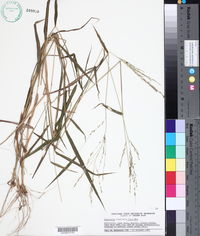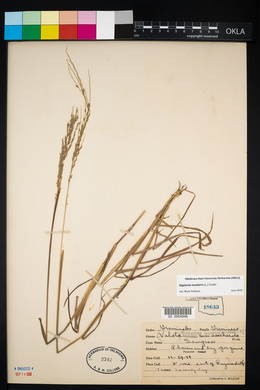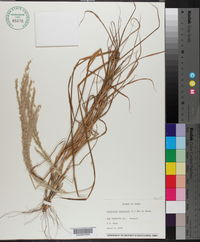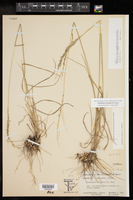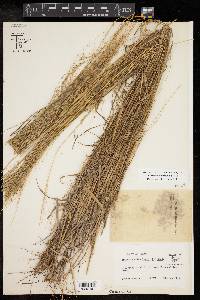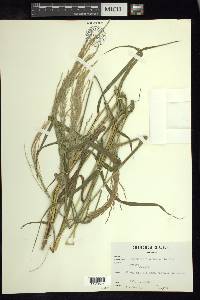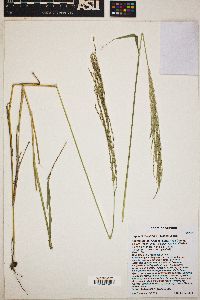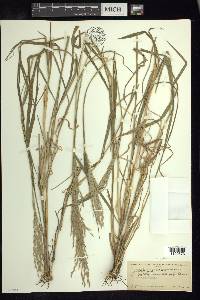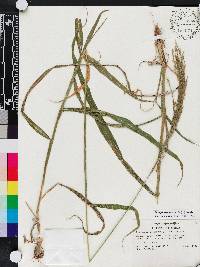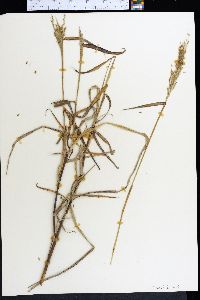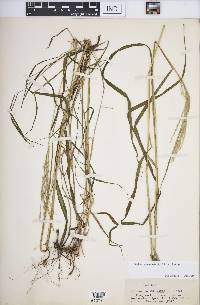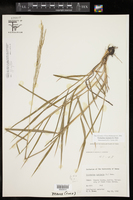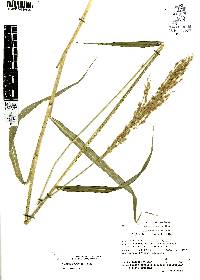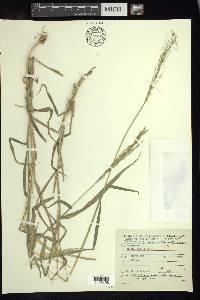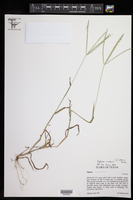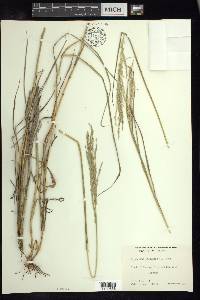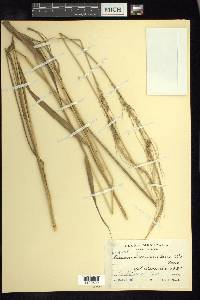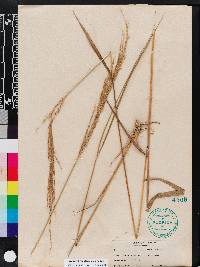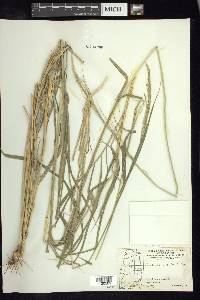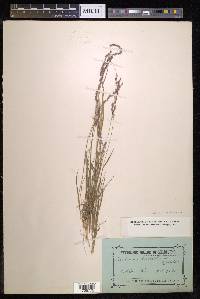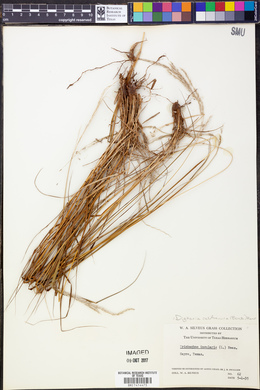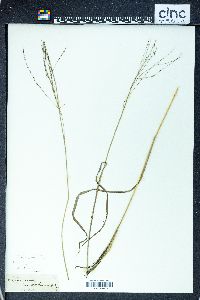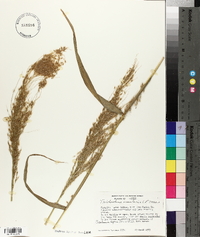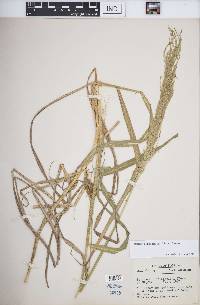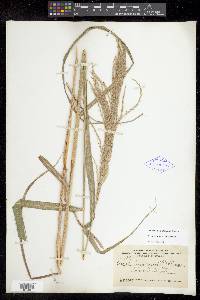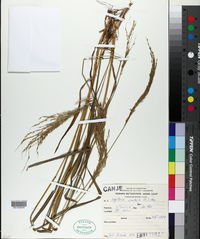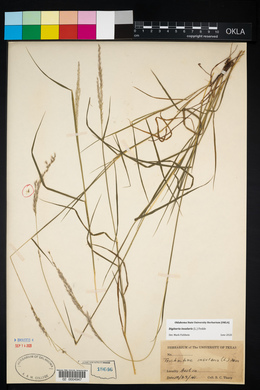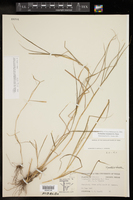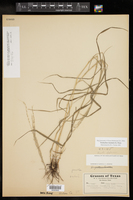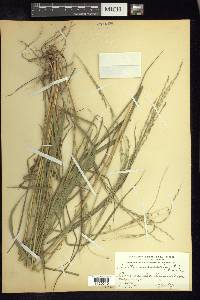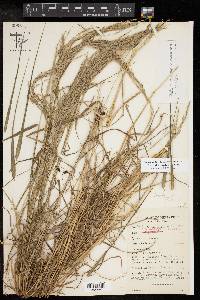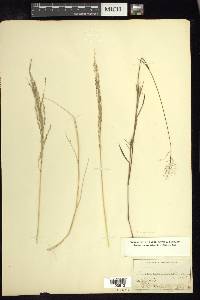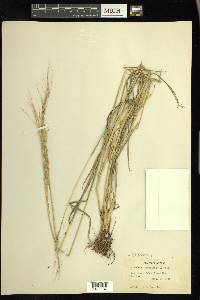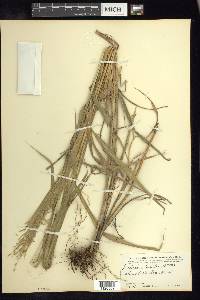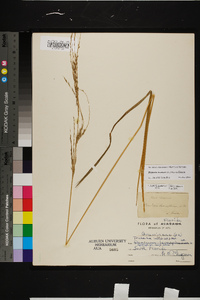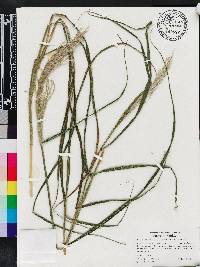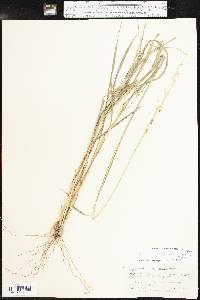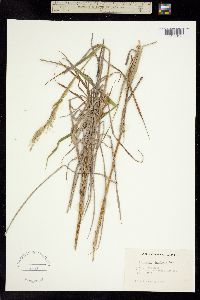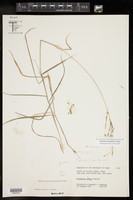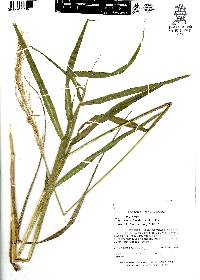
|
|
|
|
Family: Poaceae
Sour Grass, more...sourgrass
[Andropogon insulare L., moreAndropogon insularis L., Digitaria leucophaea (Kunth) Stapf, Milium hirsutum P. Beauv., Milium villosum Sw., Panicum duchaissingii Steud., Panicum falsum Steud., Panicum gavanianum Steud. ex Döll, Panicum insulare (L.) G. Mey., Panicum insulare var. insulare (L.) G. Mey., Panicum insulare var. leucophaeum (Kunth) Kuntze, Panicum insulare var. typicum Hack., Panicum leucophaeum Kunth, Syntherisma insularis (L.) Millsp. & Chase, Trichachne insularis (L.) Nees, Trichachne nutans (L.) Baum, Tricholaena insularis (L.) Griseb., Valota insularis (L.) Chase] |
Plants perennial; cespitose, shortly rhizomatous, with knotty bases. Culms 80-130 cm, erect, with densely villous cataphylls, branching from the lower and middle nodes. Sheaths usually sparsely to densely papillose-hirsute, occasionally glabrous; ligules 4-6 mm, usually lacerate, not ciliate; blades 20-50 cm long, 10-17 mm wide, lax, smooth or scabridulous abaxially, scabridulous to scabrous adaxially. Panicles 20-35 cm long, 2-10 cm wide, with numerous spikelike primary branches; primary branches 10-15 cm, appressed to ascending at maturity, axes not wing-margined or with wings less than 1/2 as wide as the midribs; internodes 3-4.5(6) mm (mid branch), with spikelets in unequally pedicellate pairs; secondary branches rarely present; pedicels not adnate to the branches; shorter pedicels 0.7-2 mm; longer pedicels 2.5-5 mm; terminal pedicels 2-5 mm. Spikelets 5.5-8.2 mm (including pubescence), 4.2-5.9 mm (excluding pubescence), narrowly ovate, acuminate. Lower glumes 0.6-0.8 mm; upper glumes 3.5-4.5 mm, 3-5-veined, pubescent on the margins; lower lemmas 4.1-5.7 mm (exceeded 1.5-5 mm by pubescence), narrowly ovate, 7-veined, pubescent between most, sometimes all, of the veins and on the margins, veins usually obscured by a dense covering of golden-brown hairs, hairs 3-6 mm, spreading at maturity, intercostal regions on either side of the midvein glabrous or pubescent with shorter, fine, white hairs, sometimes intermixed with the golden-brown hairs; upper lemmas 3.2-4.5 mm, narrowly ovate, brown when immature, dark brown at maturity, acuminate; anthers 1-1.2 mm. 2n = 36. Digitaria insularis grows in low, open ground of the southern United States, and extends to the West Indies, Mexico, and through Central America to Argentina. Dr. David Bogler, USDA NRCS PLANTS Database Perennials, Terrestr ial, not aquatic, Rhizomes present, Stolons or runners present, Stems nodes swollen or brittle, Stems erect or ascending, Stems caespitose, tufted, or clustered, Stems terete, round in cross section, or polygonal, Stem internodes hollow, Stems with inflorescence less than 1 m tall, Stems, culms, or scapes exceeding basal leaves, Leaves mostly cauline, Leaves conspicuously 2-ranked, distichous, Leaves sheathing at base, Leaf sheath mostly open, or loose, Leaf sheath hairy, hispid or prickly, Leaf sheath and blade differentiated, Leaf blades linear, Leaf blades 2-10 mm wide, Leaf blades mostly flat, Leaf blades mostly glabrous, Ligule present, Ligule an unfringed eciliate membrane, Inflorescence terminal, Inflorescence solitary, with 1 spike, fascicle, glomerule, head, or cluster per stem or culm, Inflorescence a panicle with digitately arranged spicate branches, Inflorescence branches more than 10 to numerous, Inflorescence branches 1-sided, Lower panicle branches whorled, R achis angular, Flowers bisexual, Spikelets pedicellate, Spikelets dorsally compressed or terete, Spikelet less than 3 mm wide, Spikelets with 1 fertile floret, Spikelets with 2 florets, Spikelet with 1 fertile floret and 1-2 sterile florets, Spikelets paired at rachis nodes, Spikelets all alike and fertille, Spikelets bisexual, Spikelets disarticulating below the glumes, Spikelets secund, in rows on one side of rachis, Rachilla or pedicel glabrous, Glumes present, empty bracts, Glumes 1 clearly present, the other greatly reduced or absent, Glumes 2 clearly present, Glumes distinctly unequal, Glumes equal to or longer than adjacent lemma, Glume equal to or longer than spikelet, Glume surface hairy, villous or pilose, Glumes 3 nerved, Lemmas thin, chartaceous, hyaline, cartilaginous, or membranous, Lemma similar in texture to glumes, Lemma 5-7 nerved, Lemma apex acute or acuminate, Lemma awnless, Lemma margins thin, lying flat, Lemma straight, Palea present, well developed, Pa lea membranous, hyaline, Palea about equal to lemma, Stamens 3, Styles 2-fid, deeply 2-branched, Stigmas 2, Fruit - caryopsis, Caryopsis ellipsoid, longitudinally grooved, hilum long-linear.
Kearney and Peebles 1969, FNA 2003, Gould 1988 Common Name: sourgrass Duration: Perennial Nativity: Native Lifeform: Graminoid General: Cespitose perennial grass, shortly rhizomatous, with knotty bases; culms erect, 80-130 cm tall. Vegetative: Sheaths sparsely to densely papillose-hirsute, occasionally glabrous; ligules 5 mm, usually lacerate, not ciliate; blades 20-50 cm long, 10-17 mm wide, lax, smooth or scabridulous abaxially, scabridulous to scabrous adaxially. Inflorescence: Inflorescences of ascending or spreading, slender racemes, spikelets in pairs on one side of a flat, winged rachis, the 2 spikelets in each pair identical except for having pedicels of unequal length; spikelets with 2 florets, the lower floret sterile and the upper floret fertile; disarticulation below the glumes; first glume <1 mm, second glume 4 mm, shorter than the sterile lemma and exposing the fruit, pubescent on the margins; sterile lemmas 4-6 mm (exceeded 1-5 mm by pubescence), narrowly ovate, 7-veined, pubescent between the veins and on the margins, veins usually obscured by a dense covering of golden-brown hairs, hairs 3-6 mm; fertile lemma cartilaginous, with hyaline margins. Ecology: Found in open or partially shaded rocky slopes and low, gravelly plains from 3,000-4,000 ft (914-1219 m); flowers August to November. Distribution: s US from FL through s TX and extreme s AZ; MEX, the West Indies, and C Amer, south to Argentina. Notes: This relatively rare perennial grass is found at middle elevations in the sky island mountain ranges of southern Arizona. Similar to the much more common D. californica, but with golden-brown hairs covering the spikelets, rather than the silvery-white hairs that are so distinctive on D. californica. Ethnobotany: Unknown Etymology: Digitaria is from Latin digitus, a finger; Synonyms: Andropogon insulare, Trichachne insularis, Trichachne nutans, Valota insularis Editor: LCrumbacher2012, AHazelton 2015 |
|
|
|

